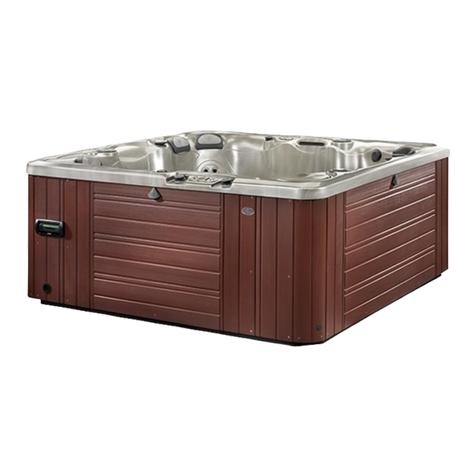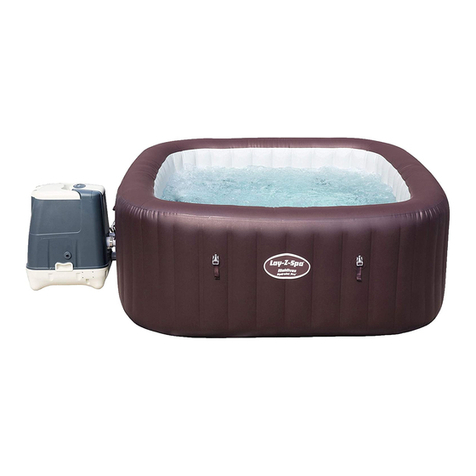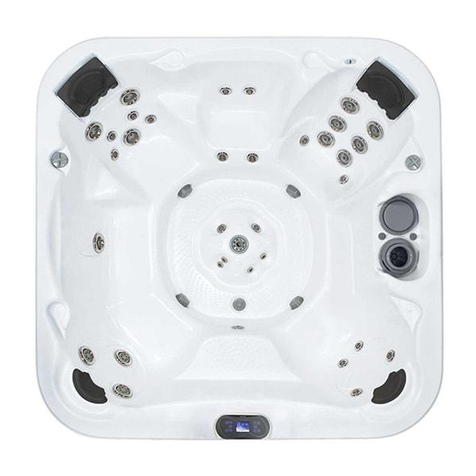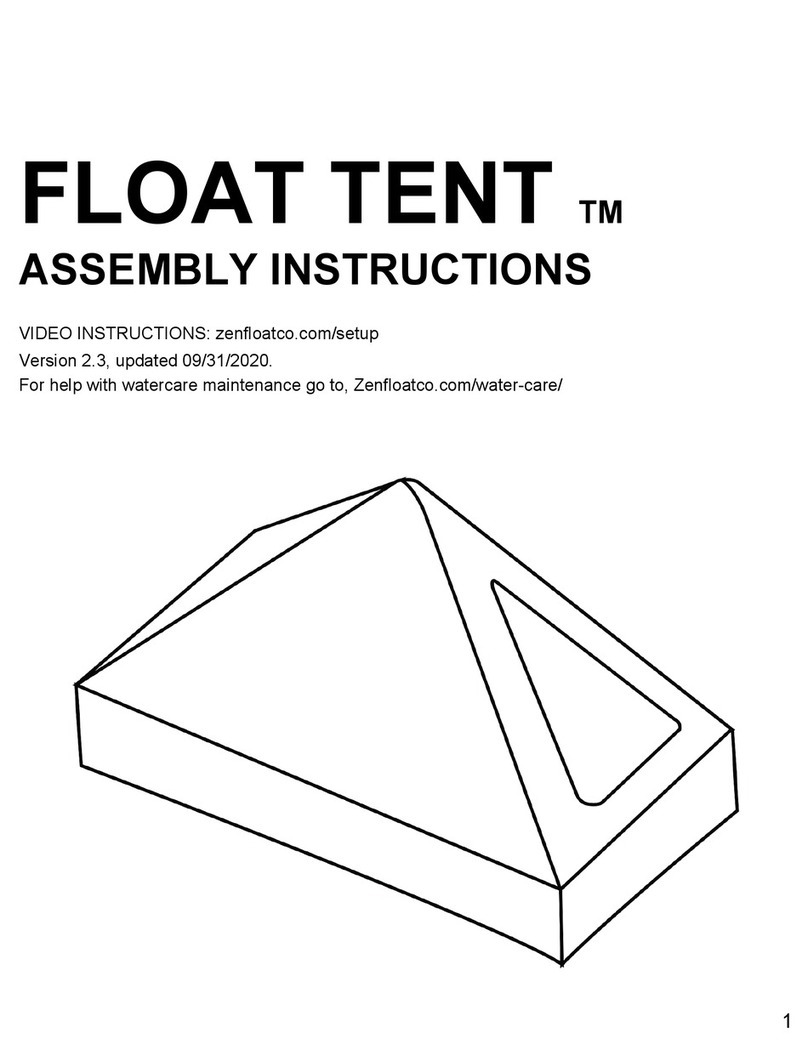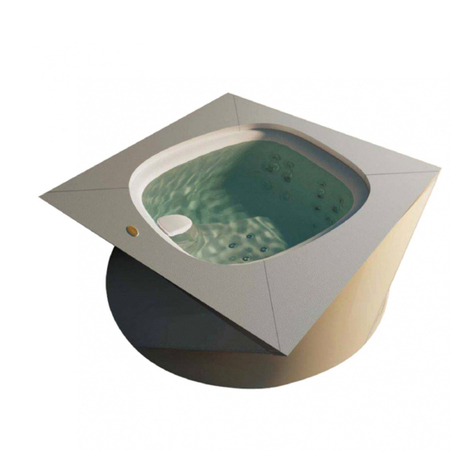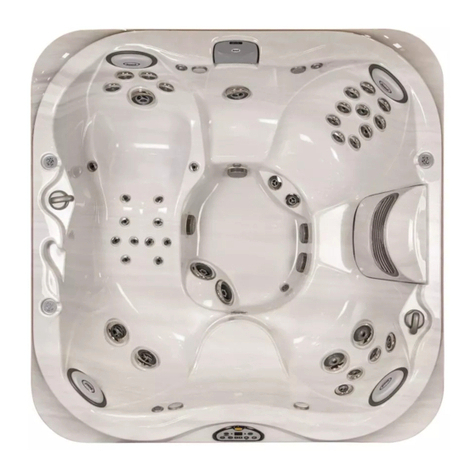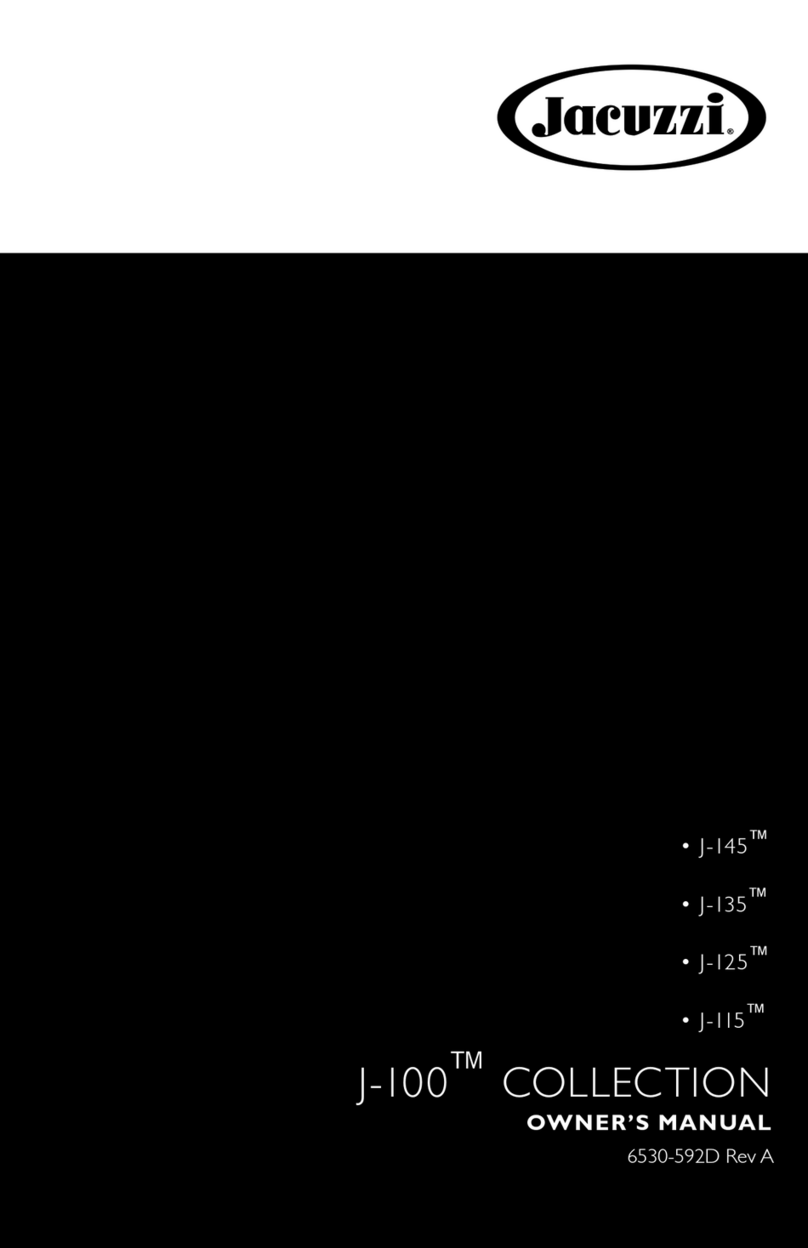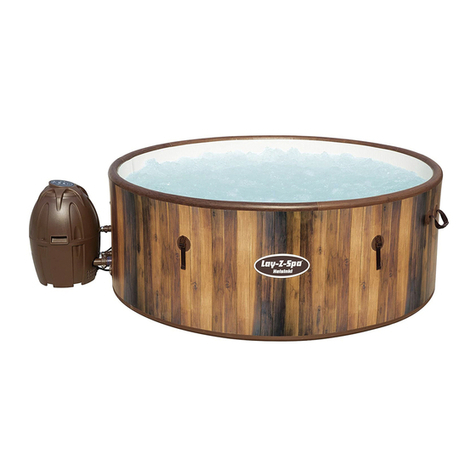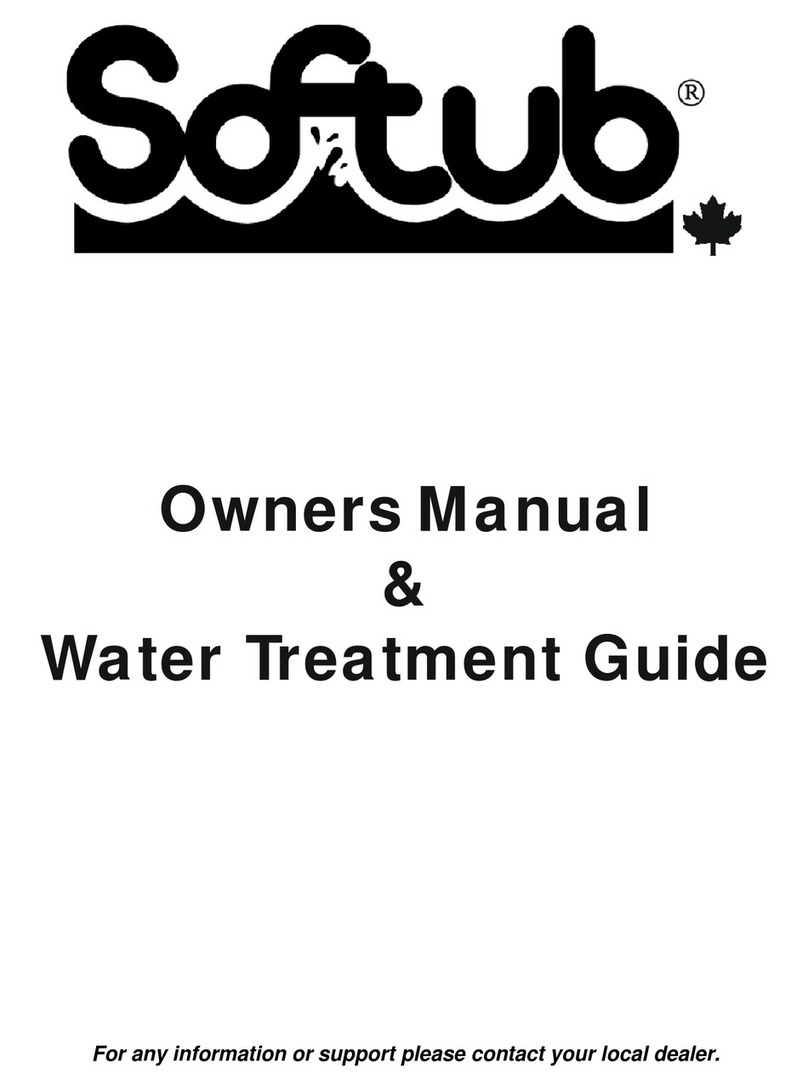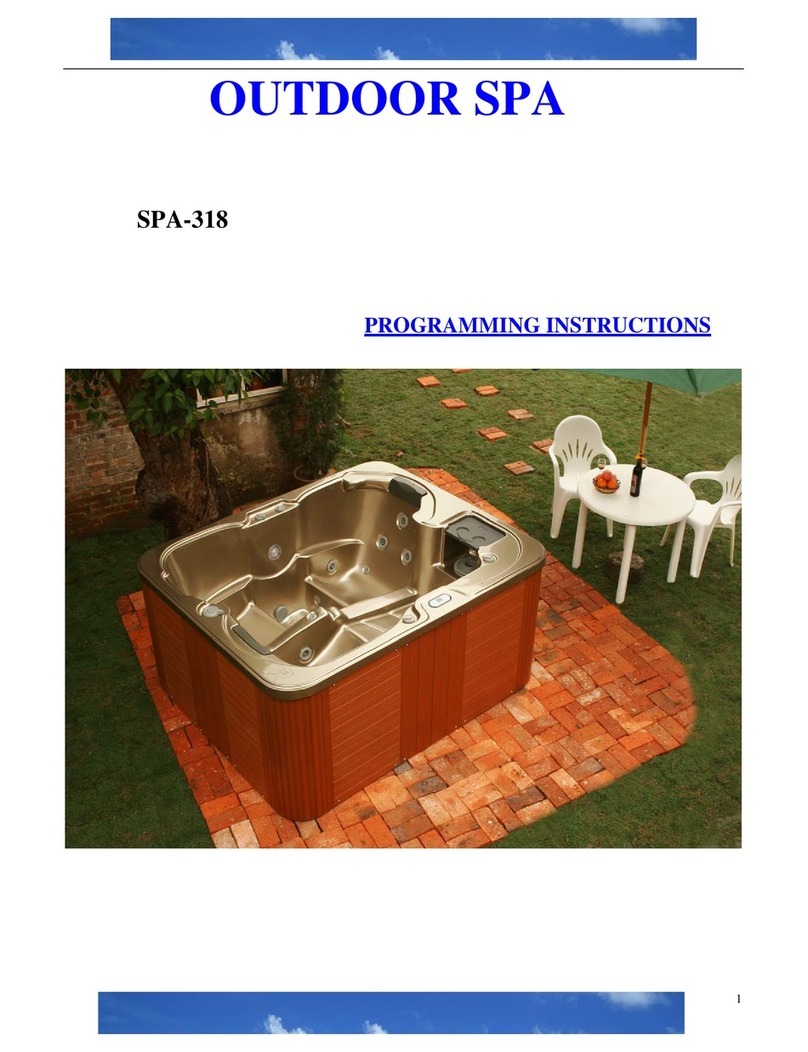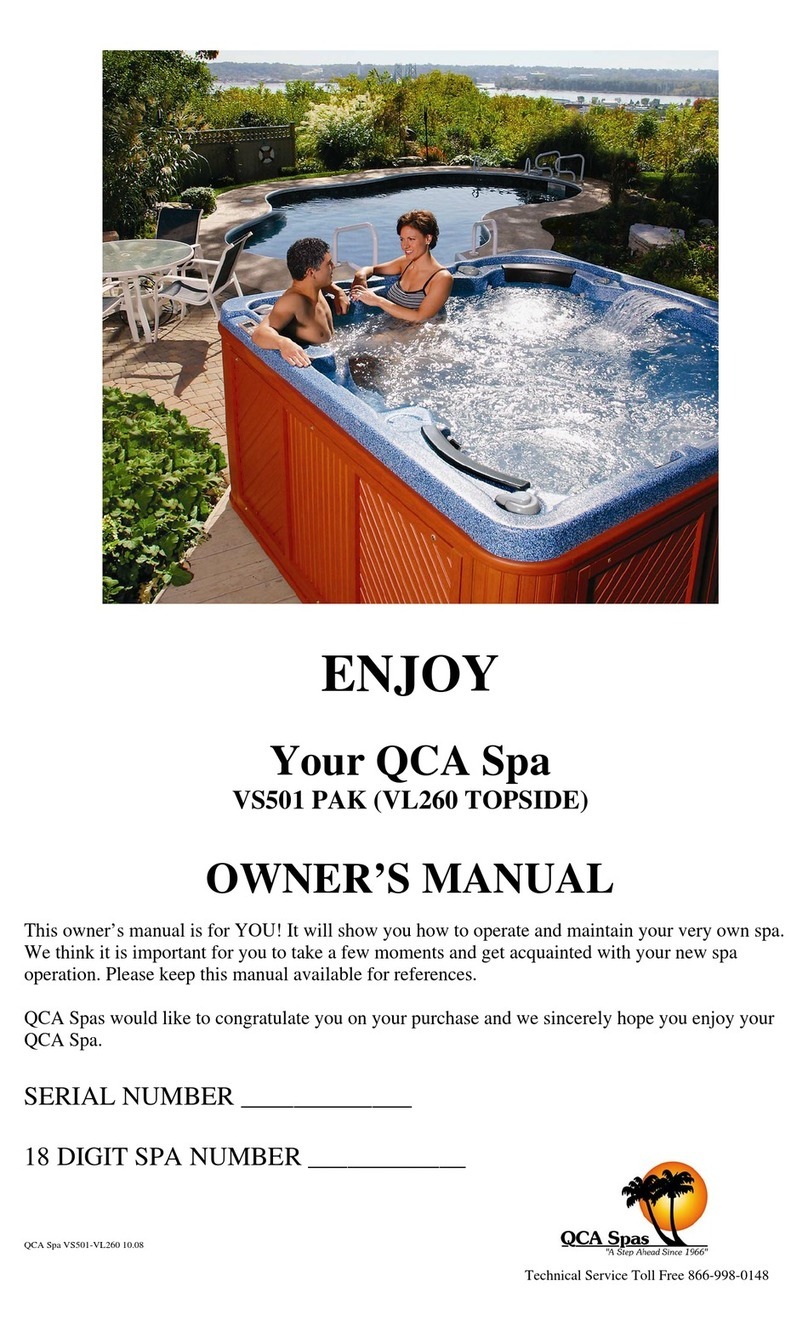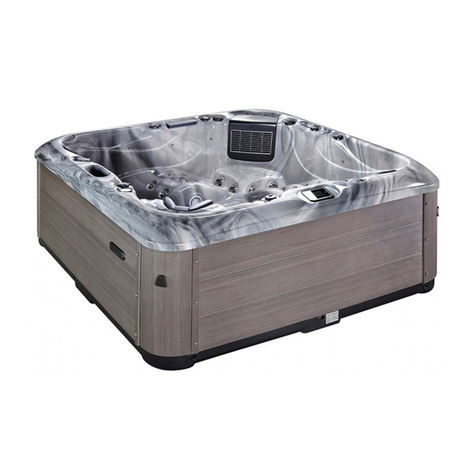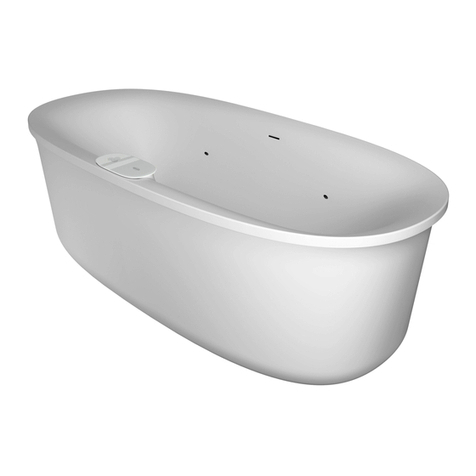bottom, directly over the dado, until it just meets the
pencil line that has been scribed about 9/16” from the
edge of the top of the tub floor.
The stave should then stand on its own from the friction
of the tapered joint. The amount of force to use at this
point is moderate - just enough to get the stave to bite the
floor enough to stand on its own. Don’t worry - you’ll get
to hit them harder soon!
Figure 6.1 Floor seams should be straddled by staves to
ensure the tub will seal.
NOTE: 4’elliptical tub has one piece floor and no floor
seam, all others have either 1 or 2 seams.
AS YOU PROCEED - Check the edges of each stave
and remove any dirt or wood particles that could
interfere with a good seal.
VERY IMPORTANT! Use of the small mirror
included in the kit: A reflective mirror approximately 4”
x 10” is used to see what is happening on the bottom of
the staves. The mirror may have a protective plastic sheet
over the reflective surface – Peel this layer off. Place the
mirror on the ground directly under the staves you are
adding. Use it to observe how tight and consistent the
gap is between staves. Use the mirror and mallet to adjust
this gap to keep it tight and consistent as you proceed.
Now work aerial view clockwise (to your left) and add a
second stave next to the first. Proceed with stave #2 going
clockwise around the tub (from aerial view), and so on.
NOTE: Proceeding in a clockwise direction is important
as it allows you to tap on the bead edge (convex edge) of
the staves with the mallet and not the fragile cove edge
(concave edge).
We have arranged the suction and jet staves in a standard
layout that makes installing the plumbing and benches as
easy as possible and is based on keeping the span with
plumbing minimized while still allowing for effective
plumbing installation and use. If a different plumbing
layout is desired, you can certainly install the staves out
of order as necessary. Retaining the factory order of the
staves will minimize the slight differences in stave
heights, causing the rim to not be perfectly smooth.
However some slight differences will still be present.
Placing the staves out of order may slightly increase these
height differences. Either way, you may wish to sand the
top rim again after you have installed and tightened the
retention bands. However, this does not affect tub
function or longevity, but rather is a cosmetic option.
DO NOT put silicone between the staves. Use the mallet
to gently tap each new stave first sideways - mating the
convex “bead” edge (ball) and convex “cove” edge
(socket) - until snug with the first stave inside and out,
then tap it inward gently until it stays in place on its own.
Remember you should be working towards your left
(clockwise from aerial). This ensures you are placing
each new stave, cove edge first. Tap the staves only on
the bead edge, NOT the cove edge which is more fragile
and could be damaged by the mallet. Add the third stave
the same way - always snug them tight sideways first,
then inward. The best technique for introducing each new
stave somewhat resembles a door hinging. Leave them so
both edges line up with the line drawn near the edge of
the tub. After this, on every second stave for 4’ and 5’
tubs and on every third stave for 6’ - 8’ tubs, do your best
to put in a very small gap of about 1/32”. Make the others
tight against each other as best you can. This is an
important step so take your time. Use the mirror and your
tape measure to judge the gap.
There’s another helpful option you can consider using,
which is to use playing cards as shims. Slide them from
below between the staves and below the floor and place
them between every stave. If they still slide up and down
pretty easily with just very slight friction, this is pretty
close to the overall gapping you’re trying to achieve.
These will be removed after all staves are on and before
the stave tightening sequence is begun. NOTE: One card
between each stave may not be the perfect amount. When
you reach the end you will still have to assess and
possibly go back and space some staves a bit more (add 2
cards to some seams every so often) or a bit less (take
some cards out), depending on how it works out.
IMPORTANT: All presence or lack of gaps between
staves should be viewed and judged from the bottom
ends of the staves NOT the tops. The tops won’t come
into place until after retention band tightening. See
Figures 6.1.1 and 6.2
Continue in this fashion to work your way around the tub
adding staves.
